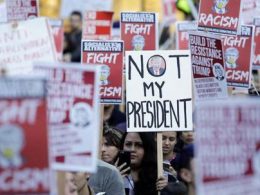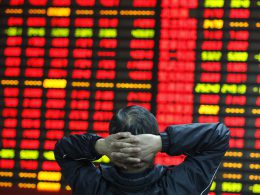Ed Miliband has beaten his brother David by a margin of only 1.3% to become the new leader of the British Labour Party. After four rounds of voting under Labour’s electoral college – which is divided into three equally weighted sections comprising the MP and MEPs, constituency Labour Party (CLP) members and those belonging to affiliated organisations such as the trade unions – Ed Miliband won with 175,519 votes to David Miliband’s 147,220.
David Miliband was the candidate of the Blairite wing of the party- Tony Blair all but endorsed him in his autobiography, “A Journey”. In contrast Ed Miliband won the biggest number of affiliate/trade union first preference votes (35%) and was backed by three of the four biggest trade unions – Unite, Unison and the GMB. David Miliband got the highest percentage of CLP first preference votes (43.9%).
Ed Miliband is marginally to the left of David, but only marginally. He played a vaguely left card in order to get elected. Trade unionists undoubtedly voted for him on this basis, angry at the attacks of New Labour over the last 13 years. Since the election Ed Miliband has been dubbed “Red Ed” by the right-wing press. Just how left his credentials are was illustrated in his first speech as Party leader on September 28th.
In it he declared the Iraq war “wrong”, but defended the war in Afghanistan. There is of course no evidence whatsoever that he opposed the invasion of Iraq in 2003. He told delegates that he understood their “anger” at a Labour government that “claimed it could end boom and bust” and had not “stood up to the old ways in the City, which said deregulation was the answer”.
However, he then went out of his way to state that he did not back all strikes and that he would lead a “responsible opposition” which would cooperate with the government where it should. Labour “won’t oppose every cut the coalition proposes”. He stated baldly “there will be cuts” and “there would have been if we had been in government”. He finished with a meaningless call for a “good society”.
A shift to the left?
Ed Miliband does not intend to take Labour to the left. Will he be pushed in that direction? The strength of what is left of “the left” in Labour can be gauged by the fortunes of Diane Abbott, a member of the Socialist Campaign Group, but a very weak candidate, in the leadership election. She took third place in the first round, but with only 9,314 party members out of 126,874 (7.34%) voting for her as their first preference. In the unions, 25,938 members out of 211,234 (12.28%) chose her for first preference. When it came to the vote of the 266 parliamentary MPs, Abbott’s share was only 2.6%.
Does the intervention of the big unions in this leadership election represent a push to the left? Firstly there was far from a ringing endorsementamongst ordinary trade unionists for the new Labour leader or the party. Only 8.7% of affiliated trade union members voted. Furthermore any rank and file trade unionist who joins Labour in order to transform it into a fighting vehicle for his class will be sorely disappointed. The Party has been transformed already – into a vehicle for the needs of the ruling class-and the old democratic channels by which Party members could influence policy have been dismantled.
Convulsions inside the Labour Party cannot be entirely excluded in the future but the possibility is very remote indeed. The conclusion that all socialists and active trade unionists should draw is that this is no time to foster illusions in New Labour. On the contrary, this leadership election has highlighted once more the absolute necessity to fight the Con-Dem government, not just on the industrial and social planes, but also the need to provide a clear political alternative.
Simon Jenkins of The Guardian recognises what is to come: “A tidal wave of protest is rolling towards the coalition government, roaring, foaming, darkening the sky, sucking every political argument into a lethal wall of water….” The coming struggles will provide opportunities to create a new mass party representing working class people.











